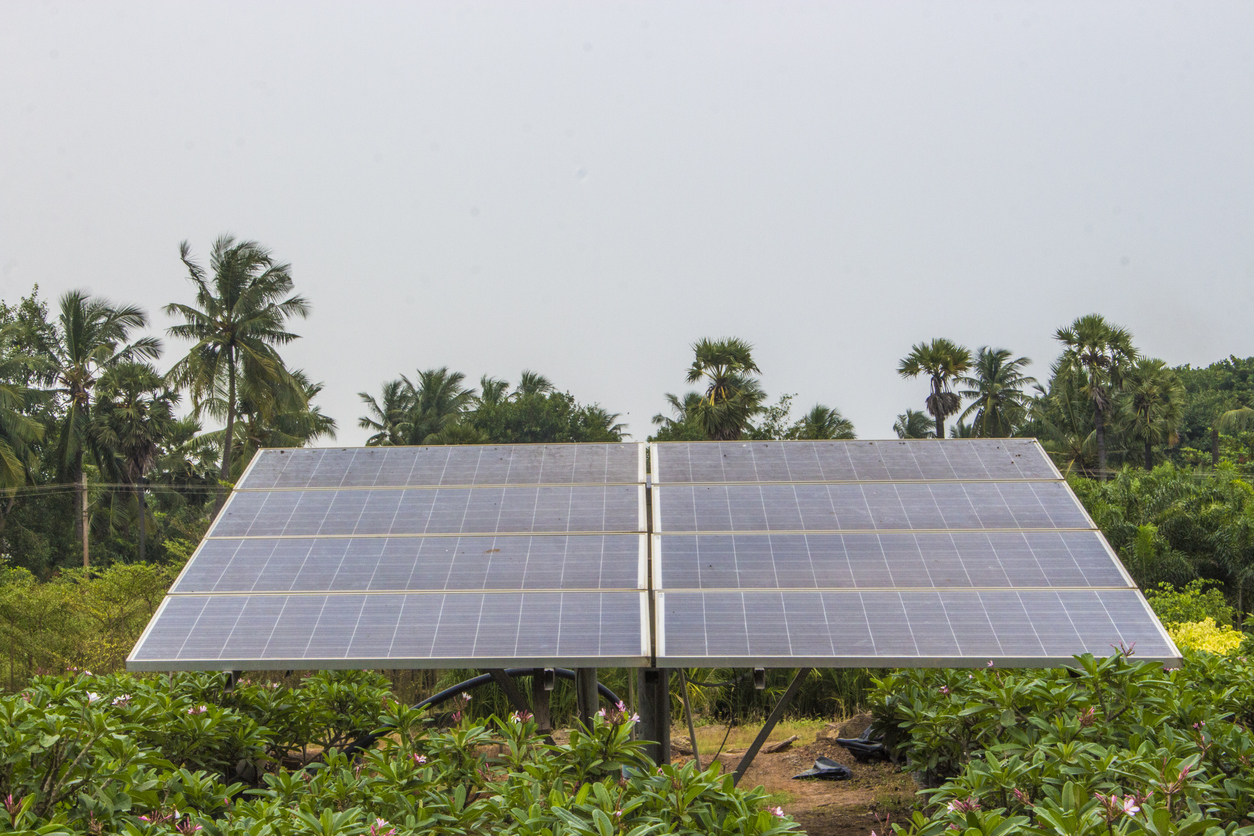
How RBI loans for farmers augment Centre’s plan to tap renewable energy

Farmers may no longer need to depend on conventional power for farm activities. In what could be called as the Centre’s initiative to equip small and marginal farmers with renewable sources of energy, the Reserve Bank of India (RBI) in a fresh set of guidelines issued recently, has made them eligible to avail small loans to install solar plants for solarisation of grid-connected agriculture pumps, as well as compressed biogas plants.
The loans supplement the central government’s Pradhan Mantri Kisan Urja Suraksha Utthan Abhiyaan (PM KUSUM) under which farmers are provided funds to set up solar pumps.
This means farmers can take loans to install solar pumps in their fields from now onwards.
The RBI has added the farming sector to its list of priorities to boost credit for renewable energy and financially strengthen small and marginal farmers (marginal farmers are those with landholding of up to one hectare while those having land between one and two hectares are considered small farmers).
What is the loan all about?
For an individual farmer, the loan limit will be ₹10 lakh per borrower while for bigger projects – solar power grids, remote village electrification, etc. – banks can lend up to ₹30 crore. The loans will be more accessible under the new guidelines and the rate of interest will be cheaper.
The changes will also enable better credit penetration in credit deficient areas and increase lending to small and marginal farmers, RBI said in its statement. This will also boost the renewable energy sector.
Supplement to PM Kusum
The RBI’s initiative rides on the success of PM Kusum which has benefitted many small and marginal farmers.
The budget outlay for PM KUSUM for 2020-21 is ₹34,422 crore. Apart from setting up the pumps, the scheme also enables farmers to set up solar power generation capacity which can be sold to the grid.
According to the Ministry of New and Renewable Energy (MNRE), the scheme has three components. The first is setting up of grid-connected renewable energy power plants, either by an individual farmer or a group of farmers. The power generated will be bought by local DISCOM at fixed rates.
The second component is the installation of about 17.50 lakh standalone solar pumps across the country. This is mainly to provide irrigation support to small and marginal farmers with no access to grid power (or electricity connection).
The third component is of solarisation of 10 lakh grid-connected irrigation pumps. The farmer can use generated power and the remaining can be sold to the local DISSCOM at fixed rates.
Sharing his experience, Dnyaneshwar Apparao Solanke, a farmer from Jalna district of Maharashtra who has installed the solar pump in his farm under the scheme said, “I have installed the solar pump in the last year. It runs for almost eight hours a day which is more than enough for my requirement. Now I do not need to make rounds in the night to turn on the pump as I have 24X7 power supply because of the solar grid.”
He added that the whole process is online and hassle-free. The pump comes with a warranty of five years.
Talking about the cost of the pump, Solanke said, “We had to give only 10 per cent of the amount for the installation”. He owns a 3HP pump which costs about ₹1.61 lakh, but he only had to pay ₹16,500 as a beneficiary of PM KUSUM.
Under the scheme, marginal farmers get a three HP pump while the small farmers get five HP solar pump installation. Also, SC/ST categories have to pay only five per cent of the amount in Maharashtra. The share of subsidy differs from state to state.
Progress of PM KUSUM so far
According to the latest figures by the MNRE, the government has managed to install 1.81 lakh solar pumps across 20 states and Union territories over the past three years.
Andhra Pradesh (60,430 pumps) and Chhattisgarh (28,267 pumps) have installed half of the solar pumps. Five states – Chhattisgarh, Rajasthan, Andhra Pradesh, Madhya Pradesh, and Uttar Pradesh – have installed more than 10,000 such pumps. Though the number looks big, it is still far from the target of 17.5 lakh installations.
North-eastern states have not installed any solar pump except for the four such installations in Arunachal Pradesh. Odisha and Jharkhand have installed 8,394 and 4290 solar pumps, respectively. The central government has the aim of installing 17.5 lakh standalone pumps by the end of 2022.
“The area of land brought under irrigation through these solar pumps depend upon several factors including capacity of pump, type of the crop, groundwater level, etc,” said the minister of renewable energy RK Singh in a written reply to Lok Sabha.


